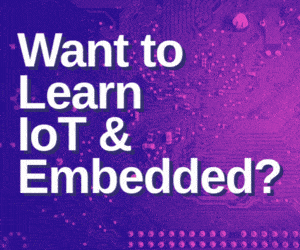Electrical symbols are a graphical representation of basic electrical and electronic devices or components. These Symbols are used in circuits and electrical diagrams to recognize a component. It is also called a schematic symbol.
Each component has typical functionality according to its operational characteristics.
An electronic circuit or schematic drawing uses a wired path between electronic components to complete the circuit.
Various national and international standards define electrical and electronic symbols used in circuits. E.g. IEC standard, JIC standard, ANSI standard, IEEE standard, etc.
Though electrical symbols are standardized, they may vary from country to country, or engineering disciplines, based on traditional conventions.
Electrical symbols do not define any function or process unless the circuit is implemented with physically used components. (E.g. the circuit on a breadboard or assembled printed circuit board)
A few electronic symbols that can be used in the circuit diagrams are given below for reference:
| ELECTRICAL COMPONENT | DEFINITION | SCHEMATIC SYMBOLS |
| WIRE SYMBOLS | ||
| Electrical wire | A conductor that carries electrical current between components | |
| Connected wires | A wire that is physically linked between components | |
| Not Connected wires | An unused/disconnected wire | |
| Ground Symbols | ||
| Earth Ground | Direct connection to Earth for voltage reference | |
| Chassis Ground | Direct connection of all metallic parts of a system | |
| Digital/Common Ground | A shared reference point | |
| Inductor/Coil Symbols | ||
| Inductor | A coil that stores energy in a magnetic field when current is passed | |
| Iron Core Inductor | Inductor with a magnetic iron core to increase the inductance | |
| Variable Inductor | Adjustable inductor | |
| Lamp/Light Bulb Symbols | ||
| Lamp/light bulb | A device that converts electrical energy to visible light | |
| Switch and Relay Symbols | ||
| SPST Toggle Switch | A switch connecting/disconnecting one circuit | |
| SPDT Toggle Switch | A switch connecting one of two circuits | |
| Jumper | A short wire connecting two points in a circuit | |
| DIP Switch | Series of switches in a single compact package | |
| Pushbutton Switch (N.C) | A button connecting the circuit when released | |
| Pushbutton Switch (N.O) | A button connecting the circuit when pressed | |
| SPST Relay/SPDT Relay | SPST relay: An electromechanical switch connecting or disconnecting a circuit SPDT relay: An electromechanical switch connecting one of two circuit | |
| Solder Bridge | A solder connecting two or more pads on a circuit board | |
| Resistor Symbols | ||
| Resistor (IEEE)/ Resistor (IEC) | A component opposing the flow of charge | |
| Potentiometer (IEEE)/(IEC) | A variable resistor with three terminals, dividing voltage | |
| Variable Resistor / Rheostat (IEEE)/(IEC) | We can change the electrical resistance using the variable resistor/rheostat | |
| Trimmer Resistor | A small, adjustable resistor for fine-tuning the circuit | |
| Thermistor | A temperature sensing resistor that changes the resistance with temperature | |
| Photoresistor / Light-dependent resistor (LDR) | A resistor changing resistance with light intensity | |
| Capacitor Symbols | ||
| Capacitor | A component storing energy in an electric field. | |
| Polarized Capacitor | A capacitor with specific +ve and -ve terminal | |
| Variable Capacitor | A capacitor with adjustable capacitance | |
| Antenna Symbols | ||
| Antenna / aerial | A device that converts electrical signals to radio waves for transmission and receives radio waves | |
| Dipole Antenna | A type of antenna consisting of two identical conductive elements, transmitting and receiving radio waves. | |
| Power Supply Symbols | ||
| Voltage Source/ Current Source | Voltage source: A device providing constant voltage Current source: A device providing constant current | |
| Battery cell / Battery | A device that stores chemical energy and converts it to electrical energy. | |
| Controlled voltage source/Controlled Current source | Controlled voltage source: A device providing adjustable voltage. Controlled current source: A device providing adjustable current | |
| AC voltage source/Generator | AC voltage source: A device providing AC voltage Generator: A machine converting mechanical energy to electrical energy | |
| Meter Symbols | ||
| Voltmeter/Ammeter | Voltmeter: Measures voltage between two points Ammeter: Measures current flowing through a circuit | |
| Ohmmeter/Wattmeter | Ohmmeter: Measures electrical resistance Wattmeter: Measures power consumed by a circuit | |
| Diode/LED Symbols | ||
| Diode/Zener Diode | Diode: A semiconductor device that allows the flow of current in one direction Zener diode: Diode that allows reverse current flow | |
| Tunnel Diode/Light Emitting Diode | Tunnel diode: This particular diode exhibits negative resistance Light emitting diode: This particular diode emits light when current flows | |
| Schottky Diode/Varicap Diode | Schottky diode: Fast-switching diode Varicap diode: A Diode in which the internal capacitance varies with the reverse voltage | |
| Photodiode | This particular diode detects light, generating current | |
| Transistor Symbols | ||
| NPN Bipolar Transistor/ PNP Bipolar Transistor | NPN: This is a BJT with a negative-positive-negative layer structure. PNP: This is a BJT with a positive-negative-positive layer structure | |
| NMOS/PMOS Transistor | NMOS: This is a field effect transistor with a negative channel PMOS: This is a field effect transistor with a positive channel | |
| JFET-N Transistor/ JFET-P Transistor | JEFT-N: It is a type of junction field effect transistor with a negative channel for switching or amplifying voltage JEFT-P: It is a type of junction field effect transistor with a positive channel for switching or amplifying voltage | |
| Darlington Transistor | It is a compound transistor consisting of two BJTs, amplifying current | |
| Miscellaneous Symbols | ||
| Motor/ Transformer | Motor: Converts electrical energy into mechanical energy Transformer: A component that transfers electrical energy from one circuit to another. It changes the voltage levels | |
| Fuse | Device that protects circuits from overcurrent | |
| Electric bell/Buzzer | Generates sound when current flows | |
| Microphone / Loudspeaker | Microphone: Converts sound into electrical signals Loudspeaker: Converts electrical signals into sound | |
| Op-amp /Schmitt trigger | Op-Amp: Used to amplify weak signals Schmitt trigger: A logic gate that converts analog signals to digital | |
| Bus | It helps transfer data between components | |
| Analog-to-digital converter (ADC) | Converts analog signals to digital | |
| Digital-to-Analog Converter (DAC) | Converts digital signals to analog | |
| Optocoupler | Component that helps in transferring electrical signals between isolated circuits | |
| Crystal Oscillator | Used to generate precise clock signals | |
| Logic Gate Symbols | ||
| AND/NAND Gate | AND gate: Logical conjunction NAND gate: Inverted AND | |
| XOR Gate/NOT Gate | XOR gate: Logical exclusion NOT gate: Logical negation | |
| OR/NOR Gate | OR gate: Logical disjunction NOR gate: Inverted OR | |
| D flip flop /Multiplexer (MUX) 2 to 1 | D flip-flop: Used to store binary data Multiplexer 2 to 1: Selects 1 signal from 2 input signals to send a single output signal. | |
To read other interesting Electronics basics: click here
This article was first published on 18 April 2020 and recently updated in September 2024.






Very nice explanation…thanks
Thank you for your feedback.